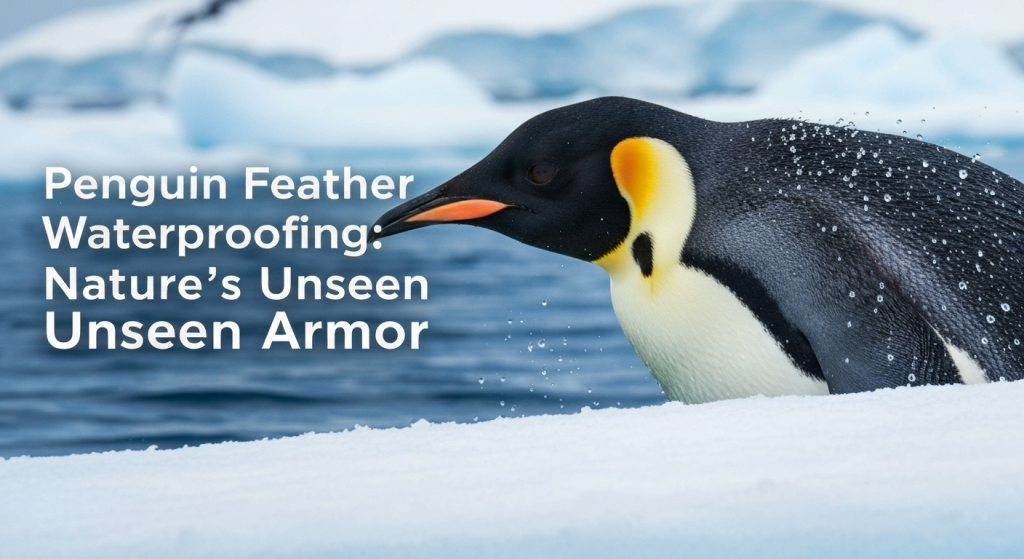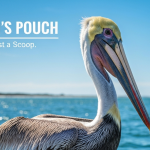Penguins are masters of a world most birds could never survive. They thrive in freezing Antarctic waters, facing icy winds and sub-zero temperatures with what looks like effortless grace. Have you ever watched a penguin shoot out of the ocean, completely dry and sleek, and wondered how they do it? It’s not magic; it’s one of nature’s most brilliant examples of biological engineering. Their ability to stay warm and dry in such a harsh environment comes down to the incredible, multi-layered system of their feathers. It’s a design so effective that it has allowed them to conquer the coldest places on Earth.
This article isn’t just about a bird’s coat. It’s about a deep dive into the microscopic world of penguin feathers. We will break down the complex structures and mechanisms that work together to create a perfectly waterproof and insulated suit of armor. From the sheer density of their plumage to the secret role of preen oil, we’ll uncover the science that keeps these remarkable birds thriving.
My name is Mahnoor Farooq, and for years, I’ve been fascinated by the incredible adaptations of bird species. My work involves digging into scientific research and observing these creatures to understand not just what they do, but how their bodies make it possible. Penguins have always been a particular focus of mine because they represent such an extreme example of evolutionary success. Sharing the story of their feather technology is about translating complex biology into a clear picture of survival, a story of how millions of tiny, intricate parts create an impenetrable shield against the elements.
A Multi-Layered Defense System, Not Just a Single Trick
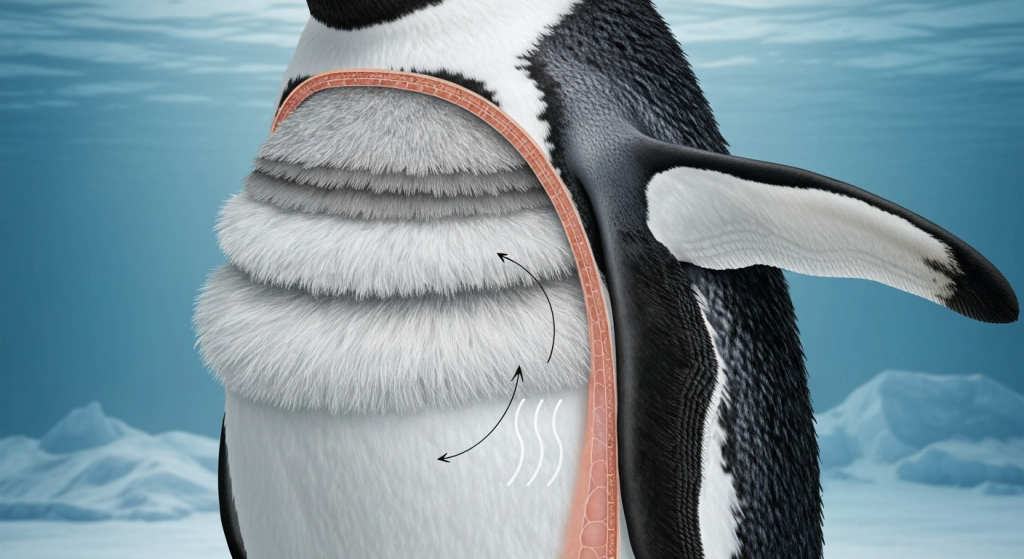
The first thing to understand about penguin waterproofing is that it’s not due to a single feature. It’s a combination of several different factors working in perfect harmony. I’ve often seen people assume it’s all about the preen oil, but that’s just one piece of a much larger puzzle. The real secret lies in the physical structure and arrangement of the feathers themselves. Think of it like a high-tech winter jacket: you have a windproof and waterproof outer shell, but you also have a thick layer of insulation underneath. Penguins evolved this exact system long before humans ever did.
Let’s break down the four key components of this natural engineering marvel:
- Extreme Feather Density: An incredibly high number of feathers packed into a small space.
- Intricate Microstructure: The complex, interlocking design of each individual feather.
- Overlapping “Shingle” Pattern: How the feathers are arranged on the body to form a physical barrier.
- The Trapped Air Layer: The crucial insulating gap between the feathers and the skin.
- Preen Oil Conditioning: The final touch that maintains feather health and flexibility.
Each of these elements plays a vital role. Without the density, the barrier would have gaps. Without the microstructure, the feathers wouldn’t hold their shape. Without the trapped air, the penguin would lose precious body heat. It’s the synergy of these parts that creates a truly waterproof and thermally regulated system.
The Foundation of Warmth: Unmatched Feather Density
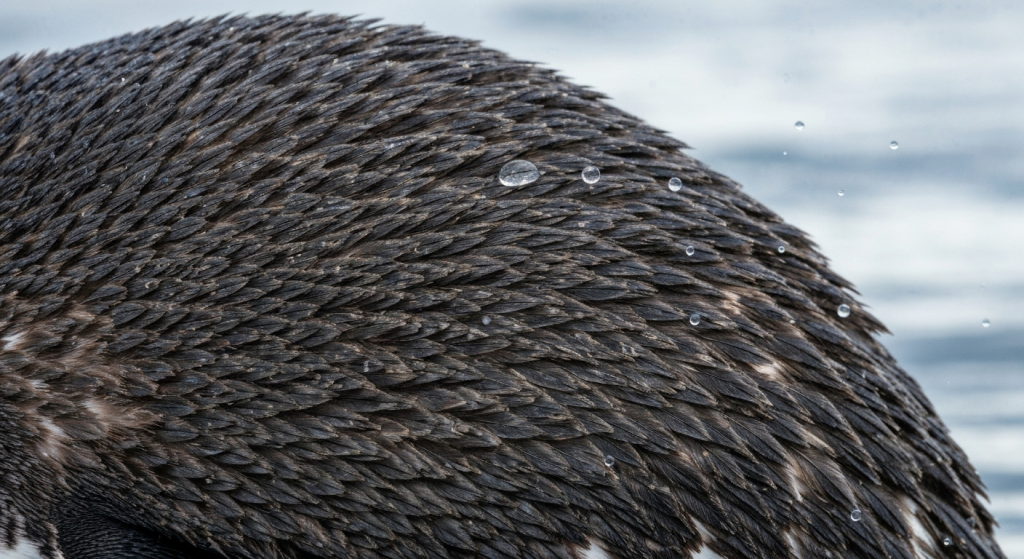
The most immediate and striking feature of a penguin’s plumage is its density. While a typical flying bird might have feathers to reduce weight, a penguin’s feathers are all about creating a dense, protective layer. When I first learned the numbers, I was stunned. Most penguin species have up to 100 feathers per square inch. That’s about 15 feathers per square centimeter. For comparison, a songbird might have two to three times less density.
This isn’t just a random collection of feathers; they are layered to perfection. There’s an outer layer of short, stiff feathers that you can see, which acts as the main shield against wind and water. Beneath this lies a secondary layer of downy, fluffier feathers (specifically, the downy afterfeathers attached to the main feather’s shaft) that are primarily responsible for trapping air.
From my years of studying avian anatomy, this density serves two critical functions:
- Creating a Physical Barrier: With so many feathers packed tightly together, it becomes physically difficult for water droplets to penetrate through to the skin. The surface tension of the water works against it, causing it to bead up and roll off.
- Anchoring the Air Layer: The density ensures that the insulating layer of air trapped underneath remains stable, even when the penguin is swimming at high speeds or diving deep underwater. The pressure of the water can’t easily compress this air pocket.
Let’s put this into perspective with a simple comparison.
| Feature | Emperor Penguin | Bald Eagle |
| Primary Habitat | Antarctic Sea Ice & Ocean | North American Forests & Rivers |
| Primary Function of Feathers | Insulation & Waterproofing | Flight & Insulation |
| Feathers per Square Inch | ~100 | ~30-40 |
| Feather Structure | Short, stiff, scale-like | Long, broad with flexible tips |
| Afterfeather (Downy Part) | Dense and prominent | Present, but less dense |
This table clearly shows a trade-off. The eagle’s feathers are masterpieces of aerodynamics, designed for lift and maneuverability in the air. The penguin, a flightless bird, has repurposed its feathers entirely for survival in the water.
A Microscopic Look: The Intricate Structure of a Feather
Now, let’s zoom in on a single penguin feather. It may look simple from a distance, but under a microscope, it’s a marvel of complex engineering. A feather is not a single, solid piece. It’s made up of a central shaft (the rachis) with hundreds of smaller branches called barbs coming off it. But the magic goes deeper. Each of these barbs has even smaller branches coming off them, called barbules.
Here’s the thing: these barbules are covered in tiny hooks, almost like microscopic Velcro. The barbules from one barb interlock with the barbules from the neighboring barb. This creates a strong, flexible, and tightly woven lattice. It’s this interlocking system that gives the feather its cohesive shape and strength.
What this really means is that the outer layer of a penguin’s coat acts like a single, continuous surface. When a penguin preens, it’s not just cleaning its feathers; it’s meticulously zipping these barbules back together, ensuring there are no gaps in its armor. I’ve observed footage of penguins spending a significant amount of time preening after a swim, and it’s this maintenance that keeps their waterproofing effective. Any small gap could be a potential entry point for freezing water.
The Role of Afterfeathers
Another key structural component is the afterfeather. This is a secondary, downy plume that grows from the base of the main feather shaft. In penguins, these afterfeathers are particularly long and bushy. While the main, interlocked part of the feather provides the waterproof outer shell, the downy afterfeathers create a soft, dense underlayer. This is the part that does the heavy lifting for insulation by trapping that crucial layer of warm air right next to the skin.
The Tightly Woven Overcoat: An Overlapping Scale Pattern
The individual structure of the feathers is only half the story. The way they are arranged on the penguin’s body is just as important. The feathers are short, stiff, and slightly curved. They lie on the body in a way that makes them overlap tightly, much like shingles on a roof or the scales on a fish.
This shingling effect is the penguin’s first line of defense against water. When a penguin dives into the ocean, the water flows over this smooth, tightly packed surface. The overlapping arrangement ensures that even if water gets past the tip of one feather, it’s blocked by the one underneath it. The pressure of the moving water actually helps to press the feathers down even tighter, further strengthening the seal.
I’ve always found this to be a simple but brilliant solution. There are no complex glands or secretions creating the barrier; it’s pure mechanical design. This system is so effective that a penguin’s skin never actually gets wet, even after spending hours in the ocean. When they emerge, any water droplets are clinging only to the very outermost tips of the feather shield. A quick shake is all it takes to send the water flying off, leaving the bird almost completely dry.
The Secret Weapon: The Role of Preen Oil
This brings us to one of the most commonly misunderstood aspects of penguin waterproofing: preen oil. Penguins, like most birds, have a special gland near the base of their tail called the uropygial gland. This gland produces a waxy, oily substance that the penguin carefully spreads over its feathers using its beak.
For a long time, it was believed that this oil was what made the feathers waterproof, like waxing a jacket. However, modern research has shown this isn’t entirely true. The primary waterproofing comes from the dense, interlocking physical structure of the feathers we’ve already discussed. A penguin with a non-functioning preen gland is still remarkably waterproof.
So, what does the oil actually do? Let’s break it down:
- It acts as a conditioner. The oil keeps the keratin (the protein feathers are made of) flexible and healthy. Without it, feathers would become brittle and break easily, creating gaps in the penguin’s armor.
- It has antimicrobial properties. The oil helps keep fungus and bacteria from growing on the feathers, which could degrade their structure and effectiveness over time.
- It aids in aerodynamics and hydrodynamics. A well-oiled feather coat is smoother, reducing drag both in the water and from the wind.
- It helps the “zipper” work. The light coating of oil helps the microscopic hooks on the barbules slide and lock together more effectively during preening.
Essentially, the preen oil isn’t the waterproofing agent itself, but rather the essential maintenance fluid that keeps the waterproofing system in peak condition. It’s not the rain jacket, but the care product that stops the jacket from cracking and tearing.
Trapping a Layer of Air: The Ultimate Thermal Insulation
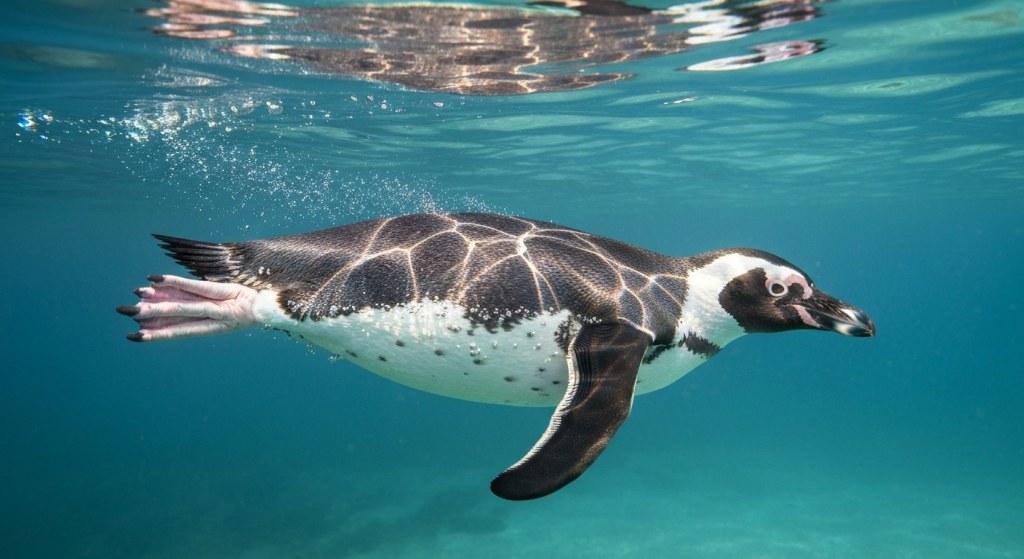
Finally, we arrive at the true secret to a penguin’s warmth: a trapped layer of air. The dense outer feathers and the fluffy inner down feathers work together to trap a layer of air against the penguin’s skin. Air is a poor conductor of heat, which means it’s an excellent insulator. This trapped air is warmed by the penguin’s body heat (around 100°F or 38°C) and forms a thermal barrier against the freezing water.
The water, which can be as cold as 28°F (-2°C), never touches the penguin’s skin. It’s held at bay by this insulating layer of air. This is the same principle behind a diver’s wetsuit, which traps a thin layer of water against the skin that is then warmed by the body. The penguin’s system is even more efficient because air insulates better than water.
When a penguin dives, the water pressure compresses its feathers, squeezing out some of this air. You can often see a trail of bubbles rising from a diving penguin. This is that trapped air being released. However, the feather structure is so dense and robust that a significant portion of the insulating air layer remains intact, even at great depths. Upon resurfacing, the feathers decompress, and the air layer is restored. This dynamic process is key to their survival during long foraging trips underwater.
Frequently Asked Questions (FAQs)
How do baby penguins stay warm without waterproof feathers?
Baby penguins are covered in a thick coat of downy fluff, not the structured, waterproof feathers of adults. This down is great for trapping air and staying warm on land but is useless in water. This is why chick-rearing must happen on land, and they rely entirely on their parents for food until they molt and grow their first set of adult, waterproof feathers.
Is preen oil the main reason penguins are waterproof?
No, this is a common misconception. The primary waterproofing mechanism is the dense physical structure of the feathers—their high density, interlocking barbules, and overlapping arrangement. Preen oil acts more like a conditioner, keeping the feathers healthy, flexible, and in good working order.
What happens if a penguin’s feathers get damaged or dirty?
Damage or contamination (like from an oil spill) is extremely dangerous for a penguin. If the feather structure is compromised, the interlocking “zipper” breaks, and the overlapping scales have gaps. This allows cold water to penetrate to the skin, destroying the insulating layer of air. A penguin in this state can quickly die from hypothermia.
Do penguins ever get cold while swimming?
Thanks to their incredibly efficient feathers and a thick layer of blubber under the skin, penguins maintain their core body temperature even in freezing water. Their waterproofing and insulation are so effective that their biggest thermal challenge is often overheating on land on a sunny day, not getting cold in the ocean.
Conclusion: Nature’s High-Tech Survival Suit
The engineering behind penguin feather waterproofing is a masterclass in natural design. It’s a system where every component, from the macroscopic arrangement down to the microscopic hooks, has a precise and vital function. It’s not one single trick but a beautiful synergy of density, structure, air, and oil. The sheer number of feathers creates an impenetrable shield. The intricate, interlocking design of each feather provides a cohesive, strong surface. The overlapping arrangement ensures no gaps, and the trapped layer of air provides the ultimate insulation.
The next time you see a penguin, whether in a documentary or at a zoo, take a moment to appreciate the unseen armor it wears. This dense, oily, and perfectly structured coat is not just a collection of feathers; it’s a testament to millions of years of evolution, resulting in a survival suit more advanced than anything humans have yet designed. It’s what allows these remarkable birds to be masters of two worlds—the icy land and the frigid sea.
